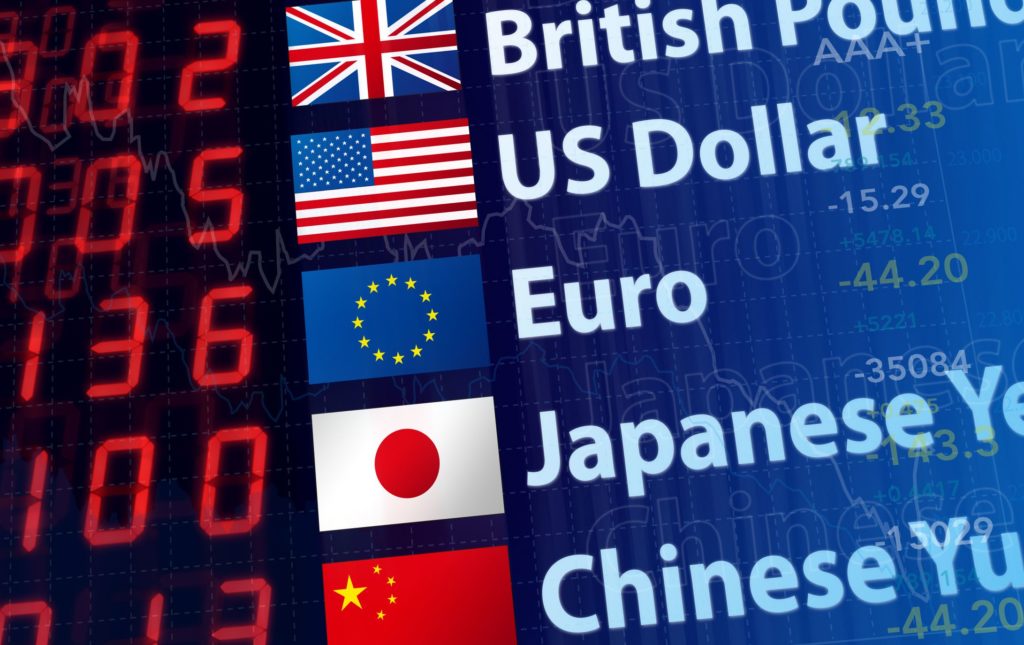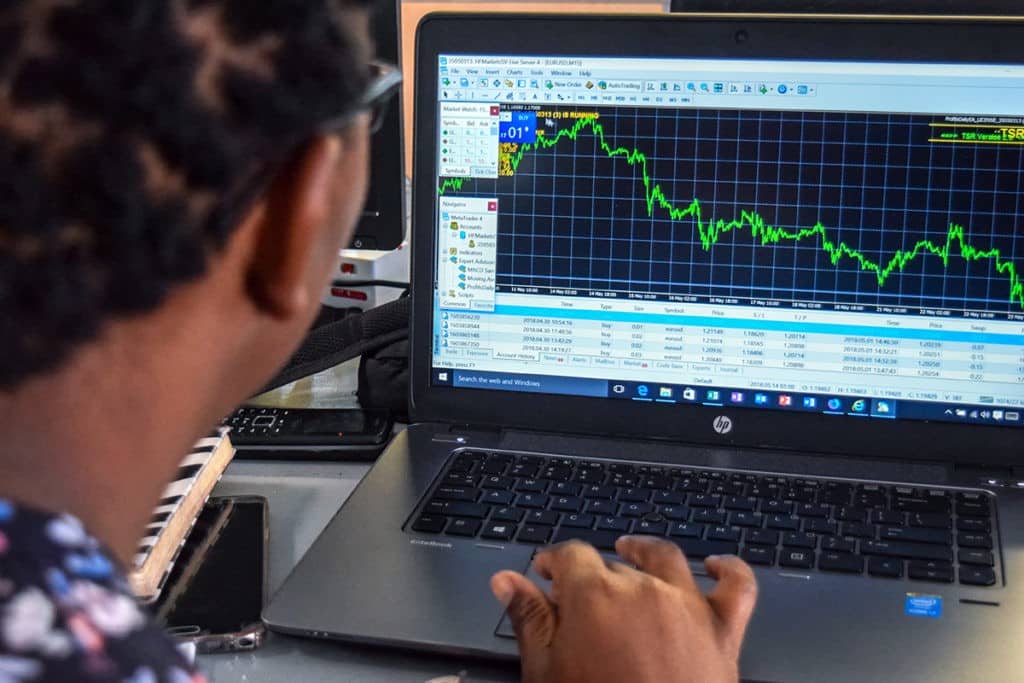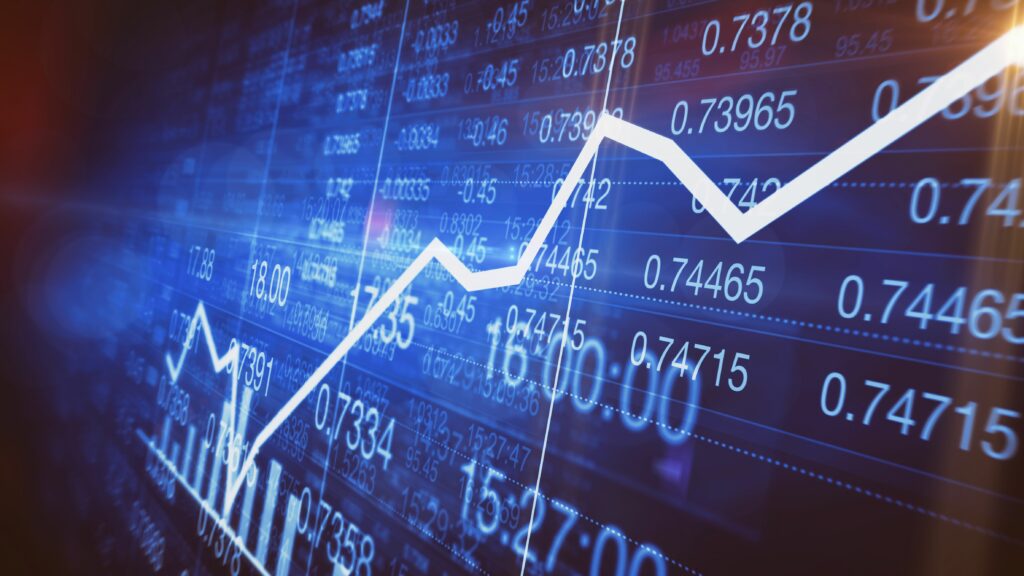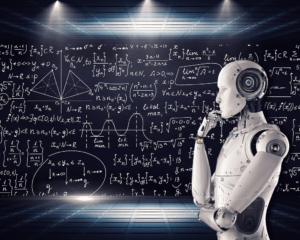The forex market is probably one of the most well known on the planet. As a result, there are hundreds of online brokers promising the moon on a stick to currency traders.
Our Forex Signals
1 - month
Subscription
 Up to 15 signals daily
Up to 15 signals daily 76% success rate
76% success rate Entry, take profit & stop loss
Entry, take profit & stop loss Amount to risk per trade
Amount to risk per trade Risk reward ratio
Risk reward ratiomonth
3 - month
Subscription
 Up to 15 signals daily
Up to 15 signals daily 76% success rate
76% success rate Entry, take profit & stop loss
Entry, take profit & stop loss Amount to risk per trade
Amount to risk per trade Risk reward ratio
Risk reward ratiomonth
 Most popular
Most popular
6 - month
Subscription
 Up to 15 signals daily
Up to 15 signals daily 76% success rate
76% success rate Entry, take profit & stop loss
Entry, take profit & stop loss Amount to risk per trade
Amount to risk per trade Risk reward ratio
Risk reward ratiomonth
Lifetime
Subscription
 Up to 15 signals daily
Up to 15 signals daily 76% success rate
76% success rate Entry, take profit & stop loss
Entry, take profit & stop loss Amount to risk per trade
Amount to risk per trade Risk reward ratio
Risk reward ratioSeparate Swing Trading Group
 Up to 3 signals weekly
Up to 3 signals weekly 76% success rate
76% success rate Entry, take profit & stop loss
Entry, take profit & stop loss Amount to risk per trade
Amount to risk per trade Risk reward ratio
Risk reward ratiomonth
1 - month
Subscription
 Up to 15 signals daily
Up to 15 signals daily 76% success rate
76% success rate Entry, take profit & stop loss
Entry, take profit & stop loss Amount to risk per trade
Amount to risk per trade Risk reward ratio
Risk reward ratiotime
The fact is that a lot of these wild claims of brokerage firms being able to provide an easy living for traders are ill-founded. There is no easy way to get rich trading, nor is there a completely risk-free way to do it.
3
Payment methods
Trading platforms
Regulated by
Support
Min.Deposit
Leverage max
Currency Pairs
Classification
Mobile App
Min.Deposit
$100
Spread min.
Variables pips
Leverage max
100
Currency Pairs
40
Trading platforms
Funding Methods





Regulated by
FCA
What you can trade
Forex
Indices
Actions
Cryptocurrencies
Raw Materials
Average spread
EUR/GBP
-
EUR/USD
-
EUR/JPY
0.3
EUR/CHF
0.2
GBP/USD
0.0
GBP/JPY
0.1
GBP/CHF
0.3
USD/JPY
-
USD/CHF
0.2
CHF/JPY
0.3
Additional Fee
Continuous rate
Variables
Conversión
Variables pips
Regulation
Yes
FCA
No
CYSEC
No
ASIC
No
CFTC
No
NFA
No
BAFIN
No
CMA
No
SCB
No
DFSA
No
CBFSAI
No
BVIFSC
No
FSCA
No
FSA
No
FFAJ
No
ADGM
No
FRSA
71% of retail investor accounts lose money when trading CFDs with this provider.
Min.Deposit
$100
Spread min.
- pips
Leverage max
400
Currency Pairs
50
Trading platforms
Funding Methods




Regulated by
CYSECASICCBFSAIBVIFSCFSCAFSAFFAJADGMFRSA
What you can trade
Forex
Indices
Actions
Cryptocurrencies
Raw Materials
Etfs
Average spread
EUR/GBP
1
EUR/USD
0.9
EUR/JPY
1
EUR/CHF
1
GBP/USD
1
GBP/JPY
1
GBP/CHF
1
USD/JPY
-
USD/CHF
1
CHF/JPY
1
Additional Fee
Continuous rate
-
Conversión
- pips
Regulation
No
FCA
Yes
CYSEC
Yes
ASIC
No
CFTC
No
NFA
No
BAFIN
No
CMA
No
SCB
No
DFSA
Yes
CBFSAI
Yes
BVIFSC
Yes
FSCA
Yes
FSA
Yes
FFAJ
Yes
ADGM
Yes
FRSA
71% of retail investor accounts lose money when trading CFDs with this provider.
Min.Deposit
$50
Spread min.
- pips
Leverage max
500
Currency Pairs
40
Trading platforms
Funding Methods




What you can trade
Forex
Indices
Actions
Raw Materials
Average spread
EUR/GBP
-
EUR/USD
-
EUR/JPY
-
EUR/CHF
-
GBP/USD
-
GBP/JPY
-
GBP/CHF
-
USD/JPY
-
USD/CHF
-
CHF/JPY
-
Additional Fee
Continuous rate
-
Conversión
- pips
Regulation
No
FCA
No
CYSEC
No
ASIC
No
CFTC
No
NFA
No
BAFIN
No
CMA
No
SCB
No
DFSA
No
CBFSAI
No
BVIFSC
No
FSCA
No
FSA
No
FFAJ
No
ADGM
No
FRSA
71% of retail investor accounts lose money when trading CFDs with this provider.
However, by learning the forex market you certainly stand a much better chance at being successful, as well as making sound decisions based on research and reading guides like ours.
It can take months or years at a time to fully understand the market, and there are shortcuts (so to speak) such as signals and robots – all of which we will cover in more detail throughout this guide on the forex market.
On this page, we are going to discuss what the forex market is and how you can trade it. We’ll also explore how to sign up with a fantastic broker, forex order types, fees to expect, and tried and tested strategies to help you mitigate your forex trading risk.
Eightcap - Regulated Platform With Tight Spreads

- Minimum deposit of just 250 USD to get lifetime access to all the VIP channels
- Use our Secure and Encrypted Infrastructure
- Spreads from 0.0 pips on Raw Accounts
- Trade on the Award-Winning MT4 & MT5 Platforms
- Multi-jurisdictional Regulation
- No Commission Trading on Standard Accounts

What is the Forex Market?
The forex market is the ‘foreign exchange’ (or FX) market – which you have no doubt heard of. However, in the name of clarity – the forex market is a global marketplace whereby heaps of investors, brokers, bankers, hedge funds, and retail investors buy and sell currencies day in and day out.
People are changing currencies against one another as an ‘exchange rate pair’ – for instance GBP/USD (British pounds/US dollar). This supply and demand dictates the buy price and sell price of a currency pair and helps with facilitating international tourism and trades – as well as stabilising the markets.

Leverage can be applied to forex CFDs of up to 1:30 on major FX pairs, and 1:20 on non-major FX pairs. We are going to cover pairs, leverage, and everything in between throughout this page.
Forex Market Fundamentals
Now that you hopefully have a clear understanding of what the forex market is, we can go into a little more detail about how to trade it. Let us start with the fundamentals of the forex market, which includes tradable pairs and different forex trading orders.
Tradable Forex Pairs
If you are interested in buying and selling currencies, you are going to need to know what pairs will be available for you to trade. Although this will also depend on what your broker of choice offers, it is still important to go into the forex markets with your eyes wide open.
This is going to help you to understand what possibilities lay before you, and help you figure out what your own forex trading interests might be.

For example:
- Let’s supposed that you decide to trade the Euro against the US dollar.
- In the world of forex, this pair is displayed as EUR/USD.
- The price at the time of writing is 1.17.
- Your goal is to predict whether the exchange rate of the pair will rise above or below 1.17.
We are going to cover forex market orders in much more detail shortly. First, let’s discuss the three different categories of forex pairs. You will usually see that currency pairs split into types – major pairs, minor pairs, and exotic pairs.
We are going to start by talking about the most traded FX pairs on the planet – which are majors.
Majors
Major pairs are made up of the US dollar and other major currencies – such as the Euro, the British pound, the Australian dollar, or the Japanese yen. The reason all major FX pairs contain USD is that the US dollar is the ‘anchor’ (or reserve) currency of the world.
Some examples of major currency pairs are as follows:
- EUR/USD (Euro/US dollar).
- GBP/USD (British pound/US dollar).
- USD/CHF (US dollar/Swiss franc).
- USD/JPY (US dollar/Japanese yen).
Minors
Don’t be fooled by the name, minor forex pairs are far from insignificant. In fact, these pairs are heavily traded on the forex market and will always contain 2 majors such as the currencies mentioned above.
What sets minors apart from majors is that these pairs will never include the US dollar.
Please see below an example of minor pairs:
- EUR/GBP (Euro/British pound).
- EUR/AUD –(Euro/Australian dollar).
- GBP/JPY (British pound/Japanese yen).
- CHF/JPY (Swiss franc/Japanese yen).
- NZD/JPY (New Zealand dollar/Japanese yen).
- GBP/CAD (British pound/Canadian dollar).
Exotics
The vast majority of trading platforms will have exotic currency pairs available. For those who are unaware, these pairs will always be made up of one major FX currency, and one emerging currency.
Emerging markets include the Mexican peso, Turkish lira, Thai baht, Uruguay peso, and more. It’s important to note that exotic forex pairs are often much more volatile than the aforementioned currency pairs, and thus will likely have wider spreads. We are going to discuss spreads in more detail shortly.
Here are some exotic currency pairs you will be able to trade if your broker offers them:
- EUR/TRY (Euro/Turkish Lira).
- JPY/NOK (Japanese Yen/Norwegian krone).
- GBP/ZAR (Pound Sterling/South African Rand).
- USD/THB (US Dollar /Thailand Baht).
- AUD/MXN (Australian Dollar/Mexican Peso).
Note: You might notice from the list above that the Norwegian krone is classed as an exotic pair. Although it is true that the krone is backed by a strong economic framework, the currency itself isn’t in high demand on the global stage.
If you are new to currency trading, you might be better off sticking with minor and major currency pairs. This way at least you can access tighter spreads to keep costs down – at least until you feel confident that you’ve learned the ins and outs of the forex market. In addition to this, majors and minors are less volatile than exotics. As such, they are much more suitable for newbies.
Understanding Forex Market Orders
Now that we’ve discussed forex pair categories, we should delve into different orders. Orders are a super important part of trading – without them, your broker won’t know what your position you want to execute on your chosen forex pair.
Buy and Sell Forex Orders
When you have determined which forex pair you want to trade, you will need to try and guess which direction you expect the pair’s price to go.

Once you have decided you will need to place either a buy order or a sell order. Please see below for an example of how this order is decided on:
- Imagine you are trading GBP/USD.
- You think that the current price of this pair will rise.
- With that in mind, you place a buy order with your broker.
- On the other hand, let’s say you believe GBP/USD is going to decrease in value.
- In this case, you need to create a sell order.
That’s it. Your position will remain until you exit your trade. For instance, if you placed a buy order – you need to close your trade by creating a sell order.
Limit Orders and Market Orders
The next orders on our list are limit orders and market orders. This is essentially the price at which you would like to enter the trade at.
Let’s start by giving you an example of when you might use a limit order:
- Let’s say you are trading EUR/USD.
- The price is currently 1.10.
- However, you don’t want to enter the trade until it reaches 1.12.
- With that in mind, you create a limit order for 1.12.
- Your broker will execute this order as and when EUR/USD hits that price.
Now, let’s show you how a market order is utilised:
- Let’s say EUR/USD has a buy price of 1.15.
- You want your order executed immediately to catch a potential short-term trading opportunity.
- As such, your broker will execute your order at the next available price.
- In this instance, your order would be executed at a price just above or below 1.15.
- This is because currency pair prices move on a second-by-second basis.
Limit orders, in particular, are used by experienced traders regularly. The reason being that you can enter a position at your chosen price.
Spreads
Put simply, the spread is the variance between the buy price and the sell price of the currency pair. It is important to have a firm grasp of what the ‘spread’ is, as it is going to affect how much profit you are able to make from your trading endeavours.

Nevertheless, the spread is how your broker is going to make some money for providing a service. This is especially the case with commission-free trading platforms like Skilling, Capital.com, and eToro.
Please see below an example of how spreads work in practice, using a hypothetical trade:
- You are trading EUR/USD.
- Your broker has quoted you a buy price of 1.1718.
- The sell price is 1.1716.
- The spread on EUR/USD is 2 pips.
In order to break-even on your EUR/USD trade, you need to make gains of 2 pips – anything above that you can count as profit.
As you can see from our example, the spread on any pair means that you are starting the trade ‘in the red’ so to speak. So here, you would be 2 pips in the red. The same applies when you are exiting a trade.
Pips
We’ve mentioned the importance of spreads and told you that in the forex market it is measured in pips. Now let us further explain what pips actually are. Pips are how the exchange rate fluctuations are calculated. We’ve explained that this can change on a second-by-second basis.
You might have noticed that on our above example of the spread we showed you EUR/USD as 4 decimal places. This is because that is how FX pairs are priced universally. So, instead of 1.17 for example, you would be quoted 1.1718 (using our scenario above).
Let’s give you an example of how pips can affect a trade, using GBP/USD as our pair:
- GBP/USD is priced at 1.3013.
- 2 hours later, the same pair is valued at 1.3003.
- The value of GBP/USD has fallen by 10 pips.
- Let’s say your stake was $100.
- Your loss or profit would be $1,000 ($100 x 10 pips).
There is an exception to most rules in life, and when it comes to forex pairs being quoted in 4 decimal points – the exception is the Japanese yen. JPY is 2 digits after the decimal – for example; 104.72.
Forex Trading Fund Management and Goals
Focusing on your bankroll management is only going to enhance your trading expertise and help you to grow as an investor. When it comes to reducing your risk and managing your capital better, there are certain orders and tools which can be invaluable to forex traders.
Let’s start by having a look at how leverage can play a part in your trades – as well as how you can utilise some damage limitations in the form of stop-loss and take-profit orders.
Leverage
Leverage is a really important part of trading the forex market for many seasoned traders. To clarify, leverage is offered by the majority of forex trading sites and enables you to trade with more funds than you have in your account.
Let’s explain further – leverage is comparable to a loan. The higher your leverage is, the higher your profit could be – of course, the other side of the coin is that your losses can be a lot greater too.
When it comes to forex, licenced brokers are only allowed to offer retail clients in the UK, Europe, and soon-to-be Australia (meaning not professional) 1:30 on major FX pairs, and 1:20 on exotics and minors.
Let’s give you a practical example of how leverage works:
- You are trading GBP/USD.
- The current price on this pair is 1.3520.
- You’ve got $500 remaining in your trading account.
- You create a buy order using 1:30 leverage.
- 4 hours later GBP/USD is 1.3790.
- GBP/USD saw a 2% rise in value.
- You cash your profit by creating a sell order with your broker.
Had you not applied leverage, this trade would have made you $10 ($500 + 2%). However, because you applied leverage of 1:30 your profit has been multiplied. As such, your profit is actually $300 ($10 x 1:30 leverage).
As we touched on, applying leverage should be carried out with caution as it can magnify your losses just as much. This is where stop-loss and take-profit orders can come in handy.
Mitigating Risk: Stop-Loss Orders
By sticking with us so far you should now have a firm understanding of orders such as buy and sell, market and limit orders.
Now, in terms of managing your trading funds – stop-loss orders allow for you to be able to exit your trade at a predetermined point – to avoid any further losses.
You will see below an example of when a stop-loss order might be used in a forex trade:
- Let’s say you are trading CAD/AUD.
- You action a buy order at 1.0710.
- You are not willing to lose more than 2%.
- With this in mind, you create a stop-loss order at 1.0495.
- The value of CAD/AUD is in decline just 2 hours later to 1.0281.
- This represents a price drop of around 4%.
- Your broker executed your stop-loss order at 1.0495 as ordered.
As per the above, this means that instead of losing 4% you only lost 2%.
Automatically Lock in Gains: Take-Profit Orders
Much like stop-loss orders, take-profit orders allow you to set a trade target – so to speak. Whilst stop-loss orders allow you to mitigate your losses, take-profit orders allow you to lock in your gains.
Here is an example of a take-profit order in another hypothetical trading scenario:
- When going long on CAD/AUD your goal is to make gains of 4%.
- With that in mind, you place a take-profit order for 4% above the price of the pair.
- When that price has been reached, your broker will execute your take-profit order for you to lock in your profit at 4%.
Your stop-loss order earlier means you are risking no more than 2%, while your take-profit order has ensured that you exit your position automatically when you make 4% in gains. This is a great way to balance your risk to reward ratio when trading in the forex markets.
Maximum Forex Stakes
When you are considering how to better manage your own trading bankroll, you should give some consideration to the maximum amount that you risk on each position. It is easier to think about this as a percentage rather than in monetary terms (like dollars or cents).

To give you an example, if you have an account balance of $2,000 – we wouldn’t advise using more than $20 of your money on a single trade. It is natural for your trading account to fluctuate as you make gains and losses. However, by only allowing yourself to stake so much at a time, the chances of you wiping out your whole account on a single wrong decision are much lower.
Tried and Tested Forex Market Strategies
We couldn’t discuss trading the forex market without talking about strategies. Once you have a good grasp of the inner workings of a forex trade – i.e. what to trade and how to place an order – you are going to want to think about your trading objectives and what strategy you are going to use, at least to begin with.
Going into trading with a strategy is going to help you stay on the straight and narrow and will enable you to make decisions which aren’t based on your emotions. We’ve put together a list of commonly used trading strategies used in the forex market globally.
Forex Day Trading
People who are day trading forex tend to keep a trade position open for less than a day (hence the name). This can mean closing a position within minutes, or hours.
Day trading usually involves opening and closing multiple trades in one day, usually with leverage. Whilst gains are smaller, with so many trades, profits come little but crucially – often. These traders bypass overnight financing fees (which we will cover later).
Forex Scalping
Forex scalping isn’t the easiest way to trade forex. It isn’t as simple to master as other strategies, so is often only utilised by seasoned traders. The aim here is to benefit from the tiny price fluctuations in a trading day.
This can involve placing heaps of orders within a matter of hours. As the namesake implies, these traders scalp tiny gains each time a forex pair shifts within a particular range.
Scalping is still thought to be a fairly low-risk strategy, especially if used alongside the aforementioned take-profit and stop-loss orders. Tiny as they may appear, if done correctly, these profits can add up to a successful trading week in no time.
Forex Swing Trading
If you are a beginner then you might find forex swing trading a sensible option. In a nutshell, swing trading is good for short-term traders who prefer to trade the forex market with a little more flexibility.
Swing traders are able to keep their trades open for one day or even two weeks, sometimes months at a time. The reason swing trading is so flexible is that the goal is to follow the trend of the pair you are trading, which can last for hours to months.
Forex Demo Accounts
Demo accounts are not to be sniffed at. They are a superb tool for both forex trading newbies and seasoned currency traders alike. The reason being, online brokerage firm’s offering clients demo accounts allow you to trade in a forex market which mirrors the real currency environment. Not only that but you will be given paper funds, like demo money.
This means you can practice a new forex trading strategy until your heart’s content, or you can just learn the ropes of the market without risking your own money.
Using Signals and Automated Forex Market Systems
We mentioned earlier that there are shortcuts, so to speak, for those who don’t yet understand the technical analysis and price charts that forex trading involves. Or perhaps you just lack the time and dedication needed to get to grips with it sufficiently enough.
In case you haven’t heard of these tools, in this section we are going to dive right into signals, mirror trading, and robots.
With that said, let’s dive in.
Forex Market Trading Signals
Let’s start with trading signals. Put simply, they are ‘suggestions’, or ‘triggers’ based on pre-established criteria such as volume surges, etc.
In its simplest form, your forex market signal will include the following information:
- Let’s say you are trading GBP/USD.
- Your signal will indicate whether you should place a buy order or sell order and when.
- Finally, it will also include a recommended stop-loss and take-profit level.
- All that you need to do then place the suggested orders with your broker.
There are different types of signals and they enable you to trade in the forex market without having to learn fundamental or technical analysis if you don’t want to.
If you like the sound of trading via forex signals, we at Learn 2 Trade are well known in this space. We offer 3 x free signals per week for you to get to grips with our service. Once you make the transition to our premium service (which comes with a 30-day money-back guarantee), you’ll get between 3-5 signals per day.
You can read more about our forex signals here.
Mirror Trading the Forex Market
This is a fantastic feature which enables traders to copy an experienced trader. In layman’s terms, whatever currency pairs they trade will be reflected in your own trading portfolio.
Put simply, if you decide to copy a trader who specialised in forex and they inject 0.4% of their portfolio in AUD/USD and 0.3% in GBP/USD – then 0.7% of your portfolio is also dedicated to those two pairs.
One of the best trading platforms to copy a trader is eToro. There are heaps of investors to choose from with a proven track record. You will have access to their stats – such as returns, chosen forex pairs, and the average trade size. You can start copying a trader from as little as $200 on the platform.
Automated Trading Robots in the Forex Market
Forex automated robots are also referred to as EAs (expert advisors). In a nutshell, forex robots allow you to trade in a completely passive way, insofar that the robot does it all for you.
Let’s explain further – unlike the aforementioned ‘copy trader’ feature it will not be a human placing the orders. Instead, automated algorithmic software will scan the relevant markets 24/7 and execute buy and sell orders on your behalf.
The best way to utilise a forex robot as part of your trading strategy is to find a provider you like and sign up. Then you need to download the software and upload it to a third-party provider like MetaTrader4.
It’s important to note that you need to make sure your broker is compatible with MT4 before signing up. Of course, there are still no guarantees when using a forex robot. With that in mind, we recommend trying a demo to see whether you like it.
How to Find the Right Online Broker for the Forex Market
In order to kickstart your forex market trading adventures, you will first need to find yourself a good broker. As we touched on, there are hundreds offering a great service, some not so good – so it can be hard to see the forest for the trees.
Taking that into consideration, we have assembled a list of key metrics to look out for when searching for the ideal forex broker. It’s also important to have a good think about what your own personal trading goals might be, to help you figure out what’s most important to you.
Licence Holder
We believe that by selecting a fully licenced broker you are protecting yourself against the dangers lurking in the online trading space. After all, it’s risky business handing your money over to a company which is free from regulation.
At the end of the day, regulatory bodies such as the FCA (Financial Conduct Authority) and CySEC (Cyprus Securities and Exchange Commission) were created to keep the financial services space clean and fair for all.
By using only licenced brokers you are actually providing yourself with several regulatory protections, including shielding against financial crime and losing your capital should the broker go bankrupt. The reason for this is that any trading platform working with the regulatory body is going to segregate your client’s funds from its own.
Available FX Pairs
Another important metric to look out for when finding the right broker for you is what forex pairs are available to trade. We’ve already covered tradable currency pairs in the forex market. Nevertheless, whilst there are over 100+ forex pairs in existence, not every trading platform will be able to offer you access to the same markets.

Commissions and Fees
Although it seems obvious to check fees – it can be easy to get carried away with promises of overnight success and the impressive number of financial instruments on offer. The fact is, if you are going to be charged $10 by your broker for each position you open and close – you need to be aware of that so that you can factor it into your potential gains.
A trading platform is a company, and therefore needs to make money in order to not only survive – but offer you a service. The good news is that there are heaps of online brokers which will offer you access to the forex market on a commission-free basis.
This means that instead of paying a commission fee on each and every trade, or a percentage of your order value – you will simply pay spreads and overnight financing fees.
Supported Payment Options
Before making your mind up when it comes to choosing a broker, you will need to know how you are going to be able to fund your trading account.
In order to access the global forex market, you will need to deposit the minimum amount stipulated (by the broker) into your account. The majority of brokerage firms accept credit/debit cards, wire transfer, and some e-wallets.
However, as we said, this will be something you need to check yourself before going too far into the research process. Also, it’s worth bearing in mind that although paying via bank wire transfer is popular, it also takes longer to reach your account (2 or 3 working days).
The Best Forex Market Brokers Right Now
If you’ve made it this far through our guide on how to trade the forex market, then chances are you are feeling pretty clued up on how to begin your currency trading adventures.
However, as we’ve said, first you are going to need to find a broker to give you access to the global currencies market. There are heaps of brokers, so sorting between the good, the bad, and the ugly can be a challenge.
To save you some internet-based leg work – we’ve put together a list of our top 5 forex trading brokers, hand-picked from the thousands active in the space.
1. AVATrade – Forex Market CFDs With Tight Spreads
AvaTrade has a variety of CFDs on offer including metals like gold and silver, cryptocurrencies, and of course, forex. Leverage on offer from this broker is capped at 1:30 for retail traders on majors and 1:20 on minors.
As a client, you can expect competitive spreads and a free demo account, with heaps of paper funds to practice with. Whether you want to practice forex trading from scratch, or just try out a new strategy. - this is ideal.
This trading platform has its own impressive mobile app called ‘AveTradeGo’ which is packed with useful tools and allows you to buy and sell forex pairs on the go.
If you are a fan of the MetaTrader series, AvaTrade is fully MT4 and MT5 compatible. You can get started with this broker from just $100.

- Min deposit $100
- AvaTradeGO application
- Leverage on forex trades
2. VantageFX – Ultra-Low Spreads
VantageFX VFSC under Section 4 of the Financial Dealers Licensing Act that offers heaps of financial instruments. All in the form of CFDs - this covers shares, indices, and commodities.
Open and trade on a Vantage RAW ECN account to get some of the lowest spreads in the business. Trade on institutional-grade liquidity that is obtained directly from some of the top institutions in the world without any markup being added at our end. No longer the exclusive province of hedge funds, everyone now has access to this liquidity and tight spreads for as little as $0.
Some of the lowest spreads in the market may be found if you decide to open and trade on a Vantage RAW ECN account. Trade using institutional-grade liquidity that is sourced directly from some of the top institutions in the world with zero markup added. This level of liquidity and availability of thin spreads down to zero are no longer the exclusive purview of hedge funds.

- The Lowest Trading Costs
- Minimum deposit $50
- Leverage up to 500:1
Elect to Open an Account with a Forex Market Broker
Opening an account with a trading platform, especially the ones on our list, is usually super simple. However, in the name of a thorough guide, we have put together a simple 3-step walkthrough to get you through the sign-up process.
Open a Forex Market Account
First thing is first – you are going to need to head over to the website of the broker you have chosen. You will usually see a ‘sign up’ button. Click that and a short form will appear.
At this point, you are going to need to enter your name, telephone number, date of birth, and email address. Most regulated trading platforms will also require a government-issued photo ID like your driving licence or passport. This is perfectly normal, as per KYC rules enforced by broker licence providers.
Deposit Funds Into your Forex Account
Now that you have created an account you are going to need to fund it. Otherwise, you won’t have anything to trade forex with. This is usually fairly simple.
Deposit the minimum amount required using the payment method of your choosing (from what’s available). Don’t forget, if you decide to deposit funds into your account using wire transfer you may have to wait a few days for it to appear. Feel free at this point to try out a demo, if available.
Place Your First Forex Trade
Now you are all set up with a funded account – you can start trading in the forex market. You simply need to find your chosen FX pair and create an order.
Here’s a quick recap of how to place your first order:
- Decide between buy or sell – depending on whether you think the price will rise or fall.
- Place a Limit Order/Market order – enter at a set price/execute immediately.
- Enter Stake Amount – how much are you willing to risk?
- Opt for or against leverage – if you wish to apply leverage, choose a multiple from what’s available.
- Set up Stop-loss/Take Profit orders – we highly recommend using these orders to balance your risk/reward from the trade.
Last but not least, confirm your order with the trading platform. We hope that your first trade in the forex market is a successful one!
Final Thoughts
If getting filthy rich was easy, it wouldn’t be reserved for under 1% of the world’s population! However, there’s no harm in trying right?
There is no way to trade in a risk-free manner. However, by following our guide and at least trying to mitigate your risks – you will be starting off on the right foot.
Trading the forex market can be a good way of making small gains on a frequent basis, and there are a variety of ways currencies can be traded. We think that utilising orders such as stop-losses and take-profits, for example, can help when it comes to setting clear entry and exit goals.
Using orders and strategies, as well as analysis, is a tried and tested way to maintain some control over how your trade might go. If you want to trade in a passive manner, then why not try trading signals or a forex robot? If you lack the time to learn the ins and outs of technical and fundamental analysis – then these tools can be a trader’s best friend.
Whichever broker you decide on, we do recommend sticking with one holding a licence from a regulatory body such as ASIC, FCA, or CySEC.
Not only do you know you are dealing with a genuine company, but you also know that your funds are held in a separate account to the brokerage firm (should the company go bust).
Ultimately, try to trade to within your own limits, have a plan in place, and think about your trading goals realistically.
Eightcap - Regulated Platform With Tight Spreads

- Minimum deposit of just 250 USD to get lifetime access to all the VIP channels
- Use our Secure and Encrypted Infrastructure
- Spreads from 0.0 pips on Raw Accounts
- Trade on the Award-Winning MT4 & MT5 Platforms
- Multi-jurisdictional Regulation
- No Commission Trading on Standard Accounts


